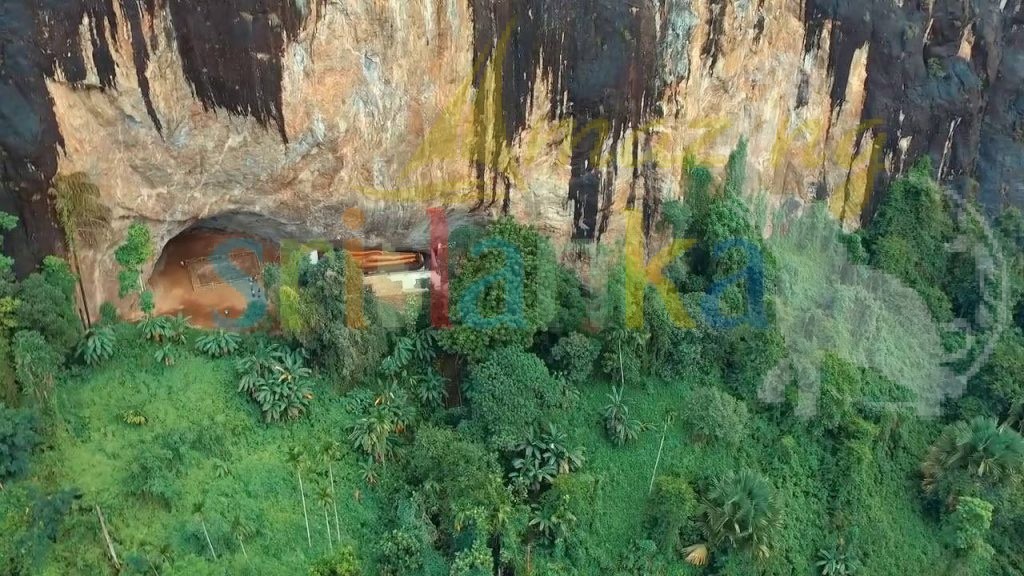
- Get directions
- Bookmark
- Share
- Leave a review
- Claim listing
- Report
- prev
- next
Description
Remnants of a Prehistoric Civilizations
This particular cave is a rather interesting natural attraction that explains a bit of Sri Lanka’s pre-historic civilization, along with some more recent history. These caves are believed to have been inhabited by the Chinese travelling monk Fa Hien when he arrived in Sri Lanka. Although it has been documented to be his abode, there is more evidence of the cave being the abode of the pre-historic man, namely from the Pleistocene era going back more than 30,000 years. Many fossilized remains have been found that belong to both, human and floral species. In addition to that, there is also evidence to show the technology that was adopted as well, along with evidence that showcases a society as well.
Hidden Amidst Lush Greenery
The current cave is a treasure trove as it displays all the pre-historic remains to the public. Moreover, reaching the cave takes you through the wilderness of the southern coast, and allows you to witness a different side of Kalutara, one in which the coast is really not the main features, but its greenery. Until today the cave is still being excavated for evidence that justifies the travelling monk’s habitation, as well as the pre-historic societies that lived in and around the cave.
LOCATED IN THE VILLAGE OF Yatagampitiya in Sri Lanka, Fa-Hien Lena (also known as Pahiyangala Cave) is the largest cave on the island, and one of the largest natural rock formations in all of Asia. The cave was also the site of a remarkable archaeological discovery that dug up human skulls dating back about 37,000 years—the remains of one of the region’s oldest prehistoric human settlements.
Surrounded by tropical greens, the mammoth cave measures 200 feet long, with an entrance 175 feet high and 160 feet wide, and sits 400 feet above sea level. There are areas inside the cave which are over 400 feet high. As archaeological research is still being conducted, many of the cave’s natural tunnels have been blocked. Aside from research, the cave is also the home of a Buddhist temple. A local monk used a heavy stone tool to clear the cave entrance and level the ground. Visitors to the cave are greeted by the temple’s 40 foot long reclining Buddha statue.
Beyond the cave’s natural beauty, the archaeological finds within it make it a remarkable piece of history. In addition to the human skulls the Sri Lankan Archaeological Departments found, they also discovered weapons from the same era. These weapons, made from animal bones and stones, were used to kill deer, monkeys, porcupines, and other animals. According to researchers, evidence found in the cave suggests that these early humans also ate “a few types of edible snails and wild breadfruit.” Researchers have also discovered that after eating the snails, the cave’s earliest residents would pierce their shells to make jewelry.
Getting to the cave can be a bit of a struggle, with about a 20 minute walk up stone steps (without a railing), but it’s a popular spot for school trips and picnickers.
Know Before You Go
A long walk and semi-strenuous climb is required to visit the Pahiyangala Cave, but compared to the other historic sites in Sri Lanka, the climb and walk, in this case, is minimal. Located about 40km away from Colombo, this is a close site and is an easy drive too. The place is accessible from Kalutara and Horana and when you take the Piliyandala Bulathsinghala Road and pass the rice fields and villages, you’ll find yourself at the stony path that leads up to the cave’s entrance. The steps in the path are cemented, but you’d find natural stone steps in between, and they must be stepped on carefully as they have jagged edges and can cause discomfort if stomped on. The excavation pit is open to visitors, and if you’re curious, you can walk down the stairs and into the pit and take a look at the digs with your own eyes. Within the cave, you’d find an ancient door that leads you into the bat cave, not like DC, but real bats that can hit you in the face when they fly out, so step in with care!
Location
-
Fa-hienlena Prehistoric Cave, ?????, Sri Lanka
District
Video
Categories
Views
You May Also Be Interested In
Kudumbigala Aranya Senasanaya
A Spiritual Oasis Amidst Nature's Splendor
- Kudumbigala Sanctuary
Dhanigala : Alien Mountain
Danigala Circular Rock - The Alien Mountain / Kandegama
- Danigala / Alien Mountain
Delft Island : The only island in Sri Lanka where wild horses live
The only island in Sri Lanka where wild horses live
- Delft Island National Park
Ruins of Ancient Kurundumale (Kurundavashoka) Viharaya in Mullaitivu
The only ancient Buddhist temple of its kind in Sri Lanka built fully out of Kabook
Dambulla Cave Temple 
Rangiri Dambulla Cave Temple
- Dambulla Cave Temple










Add a review